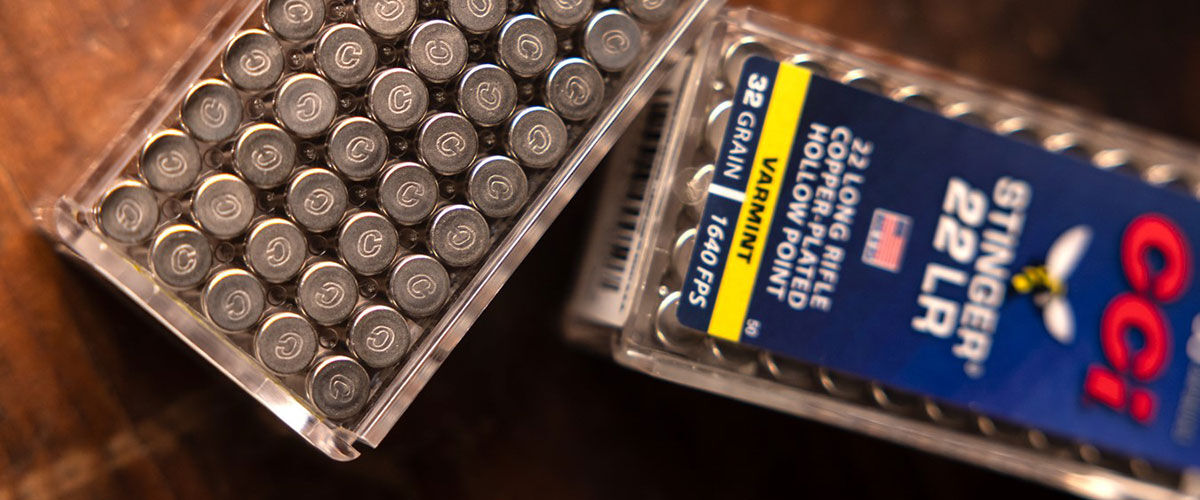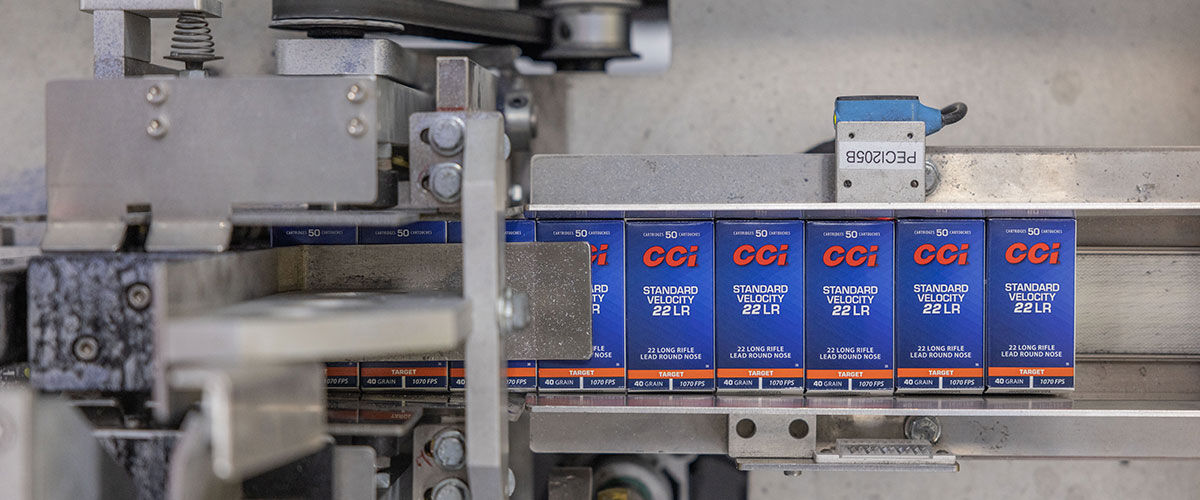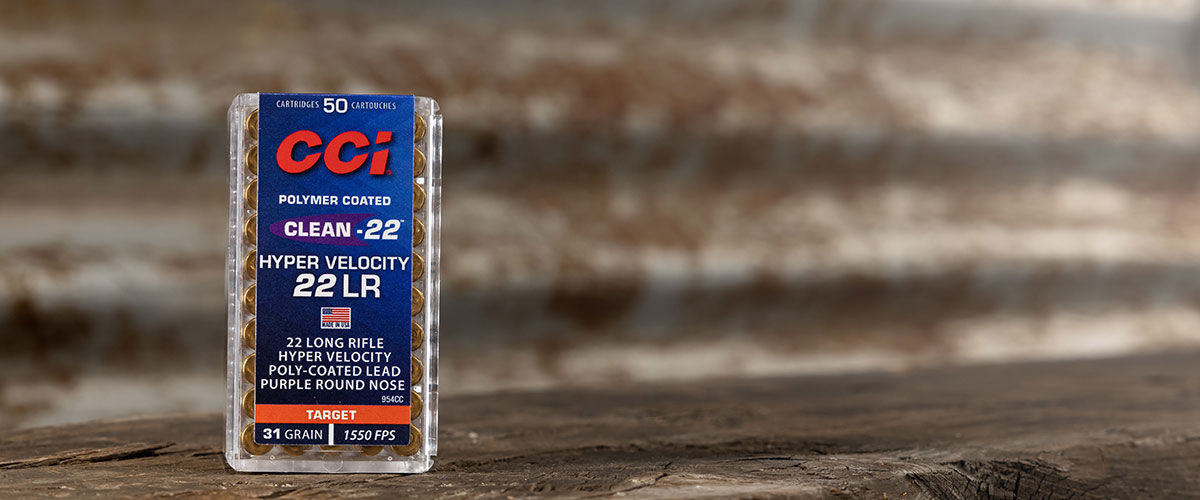
More than 130 years after its introduction, the 22 LR cartridge is still arguably the world’s most popular, in large part due to advances in the ammunition itself. These strides have kept pace with changes in technology, trends in hunting, and shooters themselves, keeping the cartridge effective and relevant while so many others faded into memory.
Let’s explore how the 22 LR got here, where it’s going, and how CCI ammunition has been on the ground floor of some of the cartridge’s most pivotal changes.
A Look Back
Formally introduced in 1887, the 22 LR exploded in popularity in the following years. By the turn of the twentieth century, rimfires were everywhere. Part of the reason was that rimfires like the 22 LR used a more reliable ignition system than earlier pinfire cartridges. The priming compound in a rimfire cartridge is, as the name suggests, spread throughout the rim itself. The rim also acts to headspace the cartridge. Lead bullets were the traditional choice for 22 LR loads because lead was cheap and carried ample energy to dispatch small game.
Interestingly, early 22 LR ammunition still used “semi-smokeless” blends of blackpowders and nitrocellulose until around the Great Depression. In the mid-twentieth century, non-corrosive primers replaced older formulas. By that time, the 22 Long Rifle was a worldwide success and the go-to rimfire round. It was used for training cadets, and during the fur boom of the 1930s, many farmers found that a good hound, a rifle, and a pocket full of .22 ammunition could help gather enough prime fur to help pay for groceries and school clothes.
Then in 1975, CCI made getting your game with a 22 LR a bit easier with the introduction of Stinger. Using a lighter 32-grain plated bullet, CCI’s Stinger could reach 1,685 fps. That gave it more stopping power on small game up close, but it also helped significantly flatten the .22’s trajectory. On average, Stinger ammunition dropped 3.5 inches less at 100 yards than standard 22 LR ammunition of the day, making CCI’s round a top choice for varmints and small game. Stinger also ushered in a new era of hyper-velocity .22 loads.
The Modern 22 LR
CCI has continued to develop innovative loads for the 22 LR, but how much can they alter the performance of a cartridge that’s already over a century old? Lots, actually. While the basic components of a 22 LR cartridge remain the same—a case with a primed rim, propellant, and a round-nosed bullet—the quality of components has a substantial impact on .22 performance.
Let’s begin at the rim. Because there’s no primer on a rimfire cartridge the firing pin strikes the rim itself, but ignition may not occur if the priming compound is not even spread within the rim itself. Uniform dispersion of priming compound within the rim reduces or eliminates misfires, and that’s one reason why CCI loads are so consistent. It’s also a reason why CCI primers are so popular among reloaders. The company’s long history helps CCI products remain the most consistent in the industry.

Propellants also play a vital role in rimfire performance, and accuracy is directly correlated with low standard deviations in muzzle velocity. Competitive rimfire shooters understand that consistent velocities are vital to rimfire accuracy and they seek out ammunition with low standard deviation (SD). Mathematically speaking, SD illustrates variation from mean muzzle velocity, and the greater this variation, the less likely you are to shoot small groups.
Good propellants and strict loading protocols result in consistent SDs. CCI’s Standard Velocity 22 LR ammunition is one of my favorite choices because it is so consistent shot-to-shot. I know I can expect SDs hovering around 10, and if you want even lower SDs for competition, you can turn to CCI’s Green Tag. It’s lot-selected for minimal SDs, and that means you can expect the most reliable performance from the rounds while hunting or shooting. SDs with Green Tag hover at or below 10, which means you can expect low velocity spreads and consistent performance.
Bullet selection is critical when choosing 22 LR rimfire ammunition, and there are more .22 bullet designs today than ever before. The classic lead round nose (LRN) bullet is still a popular choice because they offer consistent performance at a budget-friendly price point, and most match bullets are LRN.
Rather than the traditional jacket/core design of centerfire hunting bullets, rimfire hunting bullets most often feature a plated exterior. The plating helps slow the expansion of the bullet and helps retain weight, and many 22 LR hunting bullets like those used in Stinger ammunition feature a hollow point. The combination of a hollow nose cavity and plated exterior help the Stinger bullet penetrate and expand, and the open nose cavity also helps reduce the risk of ricochet.
Further enhancing .22 hunting ammunition performance is CCI’s Segmenting Hollow Point (SHP). Upon impact, the bullet fragments into three sections that continue to penetrate and cause damage with a reduced risk of overpenetration.
New Materials, Higher Performance

Recently, CCI revolutionized 22 LR bullet design by adding polymer jackets to the target and hunting bullets in the Clean-22 line. This polymer surface layer reduces friction and residue, and that improves the longevity of the firearm. Cleaning is much simpler when shooting these rounds, and if you want more energy and a flatter trajectory you can select the Hyper-Velocity Clean-22 load. It’s easy to identify the Hyper-Velocity loads thanks to their purple polymer jackets. The High Velocity Clean-22 load features a red polymer jacket and drives a 40-grain bullet at 1,235 feet per second, while the Hyper-Velocity load makes an impressive 1,550 fps with its 31-grain bullet—and it proved fatal on Kentucky squirrels last fall.
Choosing the right .22 ammo requires an understanding of which companies offer ammunition with the best combination of priming, propellants, and bullets. For decades, CCI has been at the top of the list and the brand continues to offer hunters and shooters the absolute best in 22 LR ammunition. No matter if you’re a target shooter, small-game hunter or NRL-22 competitor, there’s a load from CCI that offers the performance and price you’re looking for.